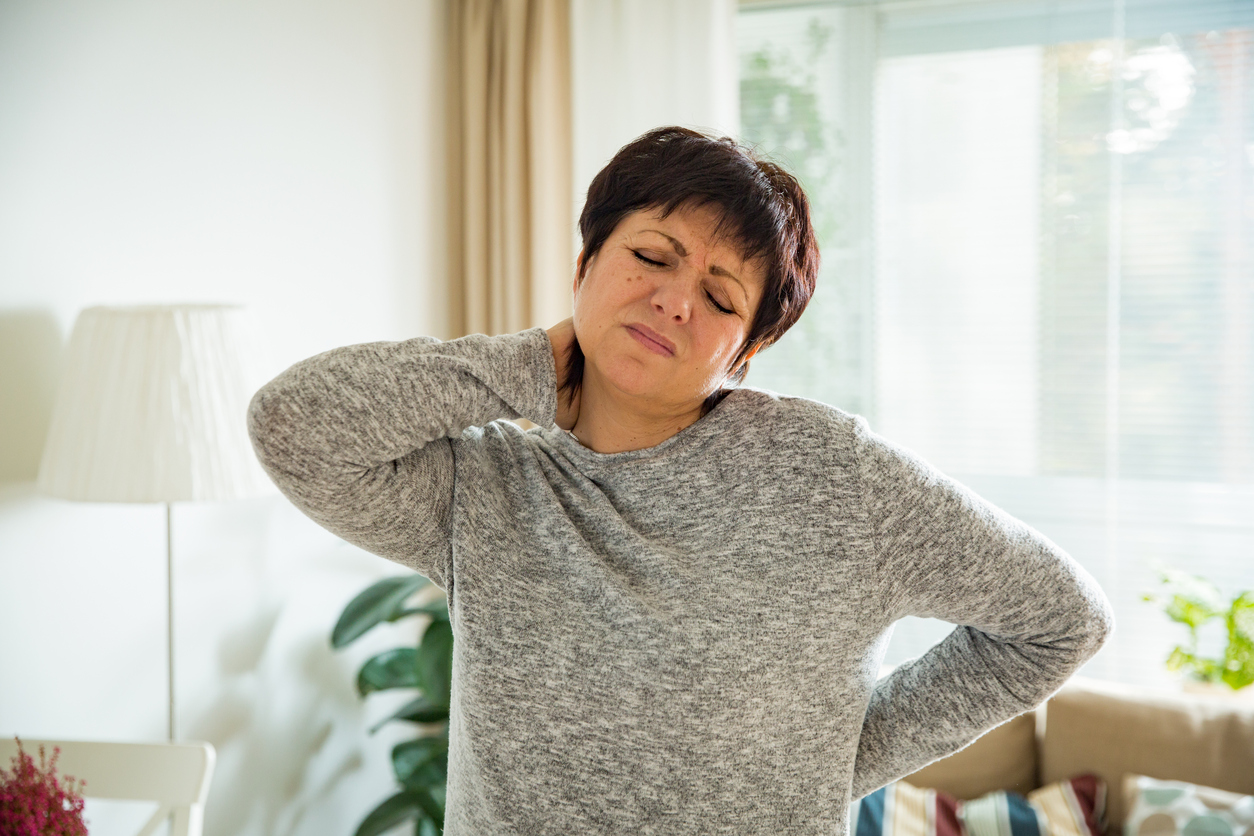Around a billion people globally and some 10 million Brits aren’t getting enough vitamin D, yet according to new research nearly nine in ten of us have never tested their levels – here are the signs you need one
It’s that time of year again. The days are getting shorter, sunshine is becoming a distant memory and concerns about low vitamin D levels start to hit the press once again.
Indeed, Vitamin D deficiency is a worldwide issue with around 1 billion people across the globe experiencing inadequate levels due to where they live.
Meanwhile, the National Institute for Health and Care Excellence (NICE) suggests that a staggering 10 million people in the UK could be at risk of vitamin D deficiency.
‘Low levels of vitamin D can manifest as common symptoms such as low mood, headaches and aches and pains to name just a few.
But while a simple blood test can reveal whether you’re one of them, new research by Better You has found that nearly nine in ten of us (and 84 per cent of women) have never had our vitamin D levels tested.
‘The importance of vitamin D is often overlooked,’ says leading nutritionist Greg Weatherhead. ‘Many assume that adequate levels can be obtained from sunlight or through a healthy diet’.
But while it is possible to obtain vitamin D through our diet, it’s difficult to get adequate levels from natural sources alone, he explains.
‘Low levels of vitamin D can manifest as common symptoms such as low mood, headaches and aches and pains to name just a few.
‘But unless several symptoms are experienced simultaneously or for prolonged periods of time many people may not visit their GP and consequently will not have the opportunity to be tested by their doctor – people won’t necessarily link low mood or aches and pains with a potential vitamin D deficiency, that a simple supplement could fix and may attribute them to something else’.
Is sunshine enough?
It’s always confusing to know whether even the summer we have just had gave us enough sunshine for adequate vitamin D levels.
Indeed, vitamin D only stays in your system for eight weeks so if you’re relying on that Ibiza holiday you had in August, your levels may well need topping up soon.
‘80-90% of our vitamin D stores are provided by the sun, with few foods providing meaningful quantities of the vital vitamin,’ says Weatherhead. ‘The only foods which provide vitamin D at a meaningful level are eggs, but only hens that are fed vitamin D, as well as fatty fish such as mackerel and herring’.

Our bodies cannot rely on sunlight alone to make enough vitamin D, Weatherhead asserts. ‘For people living in the northern hemisphere the amount of UVB radiation in autumn and winter is not sufficient to produce adequate amounts of vitamin D and even during the summer months, it’s predicted that up to 13 per cent of the population will be deficient.
Our near complete reliance on sunlight to provide us with vitamin D is problematic in respect to our modern diets and lifestyles, where time spent outdoors is on the decrease and the use of sun cream and cosmetics which include an SPF is on the increase. These products block UVB rays which are critical for the production of vitamin D in the skin.
5 signs you need vitamin D
Tiredness, low mood and aches and pains aren’t necessarily things we would immediately associate with vitamin D deficiency. Nor unfortunately do doctors. Here are the signs and symptoms – if you’ve been experiencing even one for prolonged periods it’s worth talking to your doctor, or even having a vitamin D test yourself.
Vitamin D deficiency sign #1: TIREDNESS
‘Vitamin D is critical to the correct functioning of skeletal muscles and this is one reason why it’s thought fatigue is closely related to vitamin D deficiency,’ says Weatherhead.
In fact, a fascinating study published in 2014 in the North American Journal of Medical Science took 174 patients with fatigue serious enough to see a doctor. They tested their vitamin D levels and found that over 77 per cent were deficient. After supplementing with vitamin D for five weeks all the respondents symptoms of fatigue showed improvement.
Another study looked at the relationship between vitamin D and fatigue in young women and found that those with low blood vitamin D levels were more likely to complain of fatigue.
‘Tiredness can also be experienced as a result of muscle weakness or osteomalacia, a disease in which a softening of the bones is caused by vitamin D deficiency,’ says Weatherhead.
‘It is well established in the scientific and medical community that vitamin D is required for the proper formation and maintenance of healthy bone mineral density, with a lack of vitamin D leading to rickets in children and osteomalacia (bone softening) in adults. These deficiencies are treated by supplementing vitamin D’, says Weatherhead.
Despite this a recent meta-analysis which summarises data from all available randomised controlled trials found little evidence of a benefit for vitamin D in bone health.
However, the utility of vitamin D for bone health is not in question. The interesting question it does raise is whether an RCT is the correct method for scientifically studying nutritional supplements.
Vitamin D deficiency sign #2: MUSCLE WEAKNESS OR PAIN
In around a third of those with vitamin D deficiency, muscle weakness can be a key symptoms, say experts because vitamin D plays a key role in muscle function.
Pain in the muscles both in adults and children has also been linked low vitamin D levels, which is thought to be due to the crucial role vitamin D plays in pain-sensing nerve cells. A 2014 study found that 71 per cent of people with chronic pain were found to be deficient in vitamin D.

One 2012 study published in the Annals of Family Medicine split a group of patients with chronic pain into two groups and gave one group vitamin D supplements and the second group a placebo.
After six weeks 35 per cent of those on vitamin D supplements reported pain relief compared to only 19.5 per cent of those on placebo. Moreover, those that stayed on the supplements for 12 weeks reported even greater relief in pain.
Vitamin D deficiency sign #3: FREQUENT COUGHS AND COLDS
Which vitamin do you immediately think of when it comes to increasing your immunity? Vitamin C, right? Indeed, the Better You research found that 67 per cent of us reach for vitamin C when we start to feel run down and only a third of us would think to top up our vitamin D.

So, should we?
‘People automatically reach for vitamin C but this is not always necessary as the majority of people tend to get adequate levels of vitamin C in their diet,’ says Weatherhead.
You probably know it’s found in oranges but vitamin C is also present in abundance in Kiwi fruits, broccoli, cauliflower and tomatoes. ‘Something most people don’t realise is that the greatest contributors of vitamin C to our diet is potatoes,’ says Weatherhead. Pass the spuds then.
One of the many benefits of vitamin D is its role in helping to prevent upper respiratory tract infections which include rhinitis, tonsillitis and laryngitis, otherwise known as the common cold, Weatherhead asserts.
Staggeringly, a study published in the British Medical Journal (BMJ) did a meta-analysis of 25 randomised controlled trials and showed that in people with low vitamin D levels, risk of infection was reduced by 42 per cent after they were given supplementation.
Vitamin D deficiency sign #4: LOW MOOD
Up to one in four of us will develop depression in our lifetime – that’s the diagnosed variety. But that doesn’t take into account the millions that live with low-level less-than-good moods on most days.
While it’s easy to blame the weather, or austerity, if your low mood has persisted, it’s worth having your vitamin D levels checked.

‘Vitamin D receptors appear in a number of different brain tissues and contribute to nerve formation within the brain,’ says Weatherhead. ‘Importantly these vitamin D receptors are also found in areas of the brain linked to depression’.
What’s more, research also suggests that vitamin D may help modulate levels of neurotransmitters such as serotonin within the brain which are pivotal chemicals in the development of depression, he points out.
Vitamin D deficiency sign #5: FEELING ACHEY
That general achey feeling where you can’t quite pinpoint the exact place the pain comes from – and it may even change day to day – could be vitamin D deficiency.
‘Vitamin D receptors are located all over the body and are present in nerve cells called nociceptors, which sense pain,’ says Weatherhead. ‘Muscle pain experienced as a result of low levels of vitamin D may be due to this interaction between the vitamin and pain-sensing nerve cells’.
Studies have found that taking high-dose vitamin D supplements may reduce various types of pain in people who are deficient (see study above).
Should I supplement?
First get tested. Your doctor can give you a simple vitamin D blood analysis on the NHS.
Alternatively BetterYou offer a home blood spot test kit which can be sent out by post with results sent back to you five days later.
If you’re deficient research shows taking 3000IU vitamin D is most effective to help alleviate symptoms.
Try BetterYou’s Vitamin DLux 3000IU Daily Vitamin D Oral Spray. ‘As vitamin D is fat soluble it is suited to cheek spray delivery method as it relies on the bloodstream for transportation from skin to the liver and kidneys. The faster Vitamin D can enter the bloodstream the sooner the body can benefit from it,’ says Weatherhead.
More Healthista Content:
53 supplements these top nutritionists take themselves
Why you REALLY need to take vitamin D in winter
5 symptoms of vitamin D deficiency that are ruining your wellbeing
